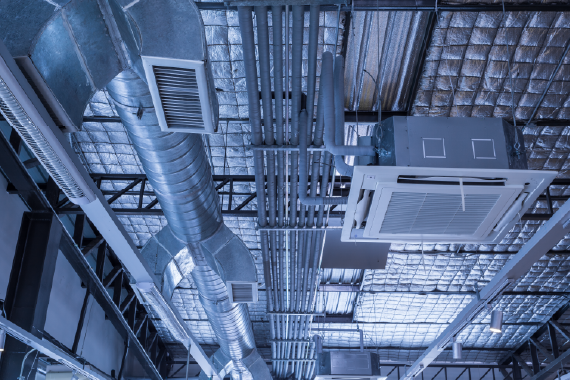We collaborate to achieve sustainable success
Get in touch with usWhy Reclaimed and Recycled Refrigerants are the Future
As the F-Gas phase-down intensifies in mid-2025, the global cooling industry is confronting a stark reality: the era of readily available, virgin high-Global Warming Potential (GWP) refrigerants is rapidly drawing to a close. This accelerating transition, driven by ambitious environmental regulations, is creating a significant supply crunch and price volatility for traditional hydrofluorocarbons (HFCs). In response, a critical solution is gaining unprecedented traction: the circular economy of refrigerants, where recovery, recycling, and reclamation are not just best practices, but essential pillars for operational continuity and environmental stewardship.
The "HFC Cliff" of 2025
The regulatory landscape in 2025 is designed to drastically reduce the availability of HFCs. In the European Union, for instance, HFC production rights are now capped at a mere 60% of their 2011-2013 baseline volumes, with further reductions planned. This measure, alongside a sharp reduction in overall HFC quotas, is creating a severe structural deficit for virgin HFC supply. Given that the demand for HFCs, particularly for servicing the vast installed base of existing equipment, has not decreased proportionally, this disparity is leading to acute supply shortages and escalating prices for refrigerants like R-404A, R-134a, and R-410A.
This "virgin HFC cliff" means that businesses heavily reliant on new HFCs face significant challenges, including potential production bottlenecks, increased maintenance costs for legacy systems, and even the risk of equipment downtime if refrigerant cannot be sourced. This economic and operational pressure is compelling the industry to look beyond new production and embrace a more sustainable, circular approach.
The Rise of Reclaimed and Recycled Refrigerants
In this environment, reclaimed and recycled F-gases are no longer niche alternatives; they are becoming indispensable for maintaining existing systems and ensuring business continuity. Regulations in both the EU and UK explicitly permit the use of recycled or reclaimed refrigerants for servicing existing systems that use high-GWP HFCs, even when virgin HFCs are banned for such applications. This regulatory allowance provides a vital pathway for businesses to comply with phase-down mandates while managing costs amidst the scarcity of new HFCs.
The market is actively shifting its focus towards these sustainable refrigerant solutions, with a stronger push for recovery and reuse strategies. This aligns directly with broader sustainability objectives and the principles of a circular economy, where resources are kept in use for as long as possible.
Understanding the Circularity: Recovery, Recycling, and Reclamation
The circular economy for refrigerants relies on three key processes:
- Recovery: This is the initial step, involving the safe removal of refrigerants from equipment at the end of its life or during servicing. This prevents their release into the atmosphere, where they would contribute to global warming.
- Recycling: Recovered refrigerants can be recycled on-site or off-site. This process typically involves reducing contaminants like oil and moisture through basic filtration and separation. Recycled refrigerants are then often reused in the same equipment or by the same owner.
- Reclamation: This is a more rigorous process, where recovered refrigerants are processed to a purity level equivalent to virgin refrigerants, meeting industry standards. Reclamation involves advanced processing techniques to remove impurities and restore the refrigerant to its original specifications. Once reclaimed, the refrigerant can be resold and reused in any suitable equipment, effectively re-entering the supply chain.
Benefits of a Circular Approach
Embracing reclaimed and recycled refrigerants offers a multitude of benefits:
- Environmental Protection: By preventing the release of potent greenhouse gases into the atmosphere, these practices directly mitigate climate change impacts.
- Supply Security: Reclaimed refrigerants provide a crucial alternative supply source, helping to offset the diminishing availability of virgin HFCs and ensuring that existing equipment can continue to be serviced.
- Cost-Effectiveness: For many businesses, using reclaimed refrigerants can be a more affordable solution compared to the escalating prices of new HFCs, helping to manage operational expenses.
- Regulatory Compliance: Utilizing reclaimed or recycled refrigerants for servicing existing systems is explicitly allowed under F-Gas regulations, providing a compliant pathway for businesses.
- Resource Efficiency: It promotes a more efficient use of resources by extending the lifecycle of valuable chemical compounds, reducing the need for new production.
Companies like AFS Cooling are actively involved in this circular model, offering procurement solutions that include virgin, reclaimed, and recycled F-gases globally, thereby supporting businesses in their transition and compliance efforts.
Challenges and the Path Forward
While the benefits are clear, the expansion of the refrigerant circular economy requires continued effort. Challenges include ensuring the quality and purity of reclaimed refrigerants, developing robust logistics for collection and processing, and ensuring a skilled workforce capable of proper recovery and handling.
However, the industry is actively addressing these. The European Partnership for Energy and the Environment (EPEE), for example, has scheduled briefings on Recovery, Recycling, and Reuse (RRR) activities in July 2025, underscoring the ongoing focus on circular economy principles for refrigerants.
The F-Gas phase-down is not just about phasing out harmful substances; it's about fundamentally transforming the way the cooling industry operates. The increasing reliance on reclaimed and recycled refrigerants is a testament to this shift, demonstrating a commitment to sustainability, resource efficiency, and operational resilience. For businesses navigating the complexities of mid-2025, embracing the circular economy of cooling is not merely an option it is a strategic imperative that promises long-term compliance, cost savings, and a significantly reduced environmental footprint.

